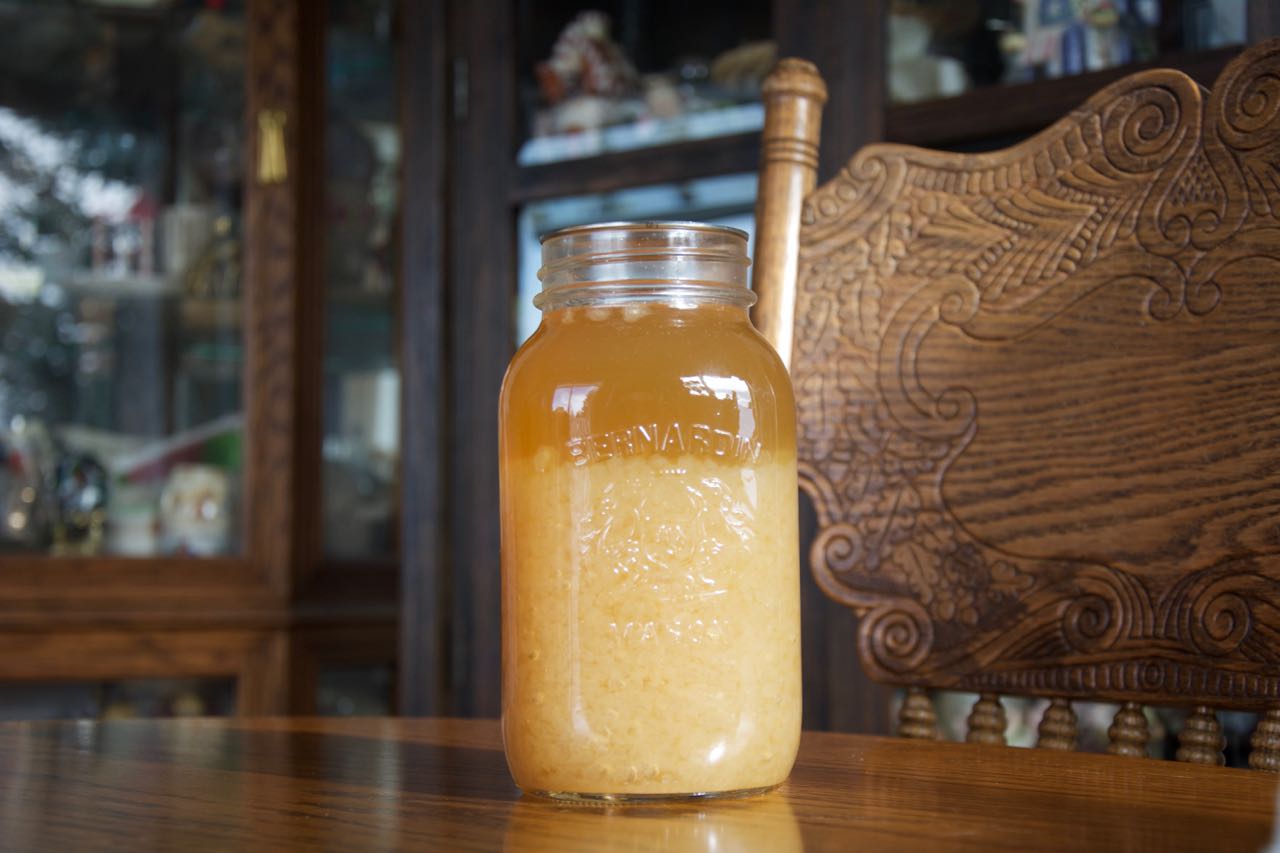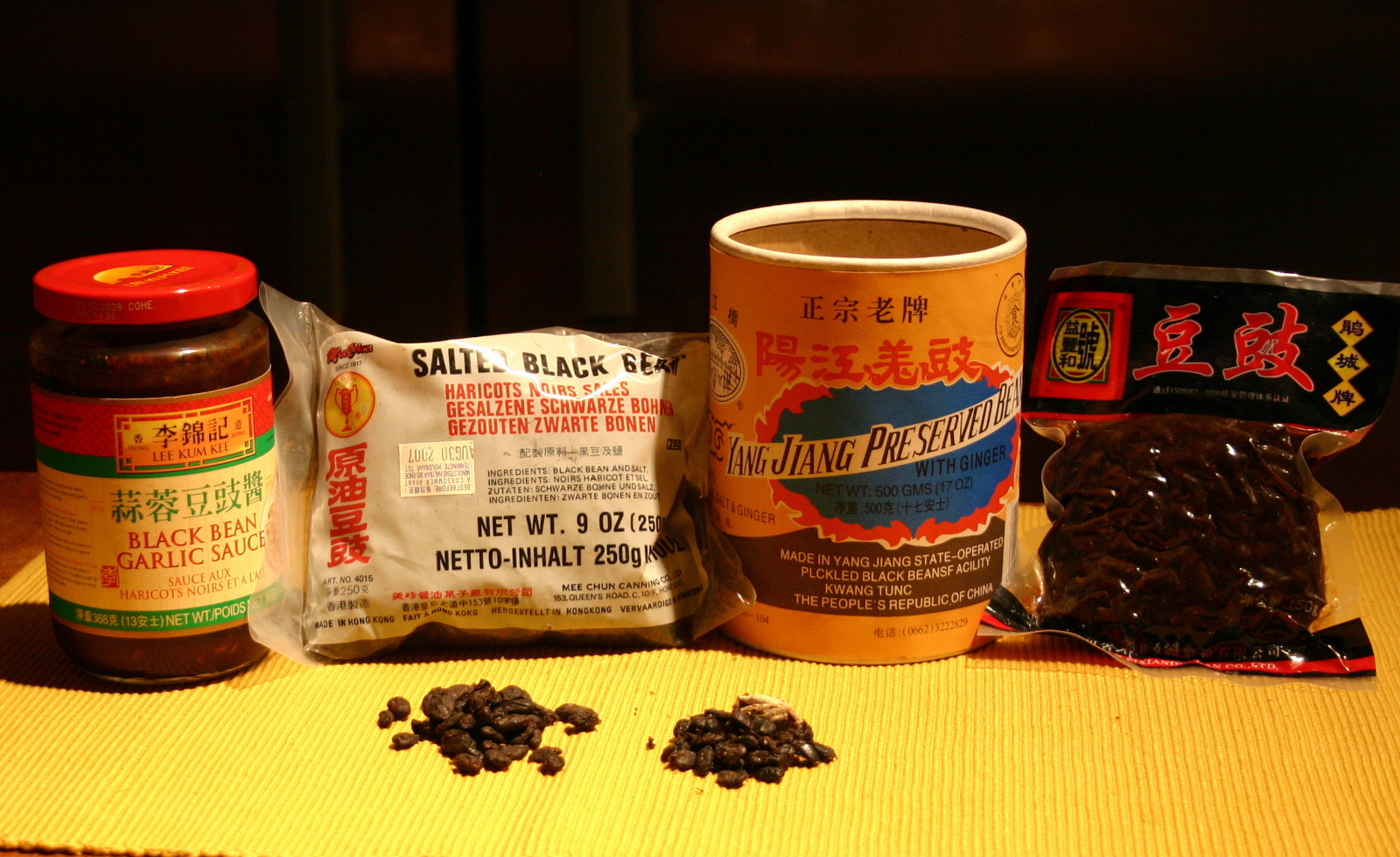|
List Of Fermented Foods
This is a list of fermented foods, which are foods produced or preserved by the action of microorganisms. In this context, fermentation typically refers to the fermentation of sugar to alcohol using yeast, but other fermentation processes involve the use of bacteria such as lactobacillus, including the making of foods such as yogurt and sauerkraut. Many fermented foods are mass produced using industrial fermentation processes. The science of fermentation is known as zymology. Many pickled or soured foods are fermented as part of the pickling or souring process, but many are simply processed with brine, vinegar, or another acid such as lemon juice. __TOC__ Fermented foods Fermented beans and seeds Fermented cheeses Most cheeses (all but fresh cheeses) are fermented as part of their production. Fermented condiments Fermented creams and yogurts Fermented grains and grain-based foods Fermented fruits and vegetables Fermented meat and seafood ... [...More Info...] [...Related Items...] OR: [Wikipedia] [Google] [Baidu] |
Tibicos Water Crystals
Tibicos, or water kefir, is a traditional fermented drink made with water and a symbiotic Bacterial culture, culture of bacteria and yeasts (SCOBY) held in a polysaccharide biofilm Matrix (biology), matrix created by the bacteria. It is sometimes consumed as an alternative to milk-based probiotic drinks or tea-cultured products such as kombucha. Water kefir is typically made as a probiotic Homebrewing, homebrew beverage. The finished product, if bottled, will produce a carbonated beverage. Cultures Tibicos cultures are found around the world, with no two being exactly the same; but typical tibicos have a mix of ''Lactobacillus'', ''Streptococcus'', ''Pediococcus'' and ''Leuconostoc'' bacteria, with yeasts from ''Saccharomyces'', ''Candida (genus), Candida'', ''Kloeckera'' and possibly others. ''Lactobacillus brevis'' bacteria has been identified as the species responsible for the production of the dextran polysaccharide that forms the "grains." As with kefir, milk kefir "grains" ... [...More Info...] [...Related Items...] OR: [Wikipedia] [Google] [Baidu] |
Cheonggukjang
Cheonggukjang () is a traditional Korean food made by fermenting soybeans. It contains whole, as well as ground soybeans. Production It can be made in two to three days through fermentation of boiled soybeans, adding ''Bacillus subtilis'', which is usually contained in the air or in the rice straw, at about 40°C without adding salt, compared with the much longer fermentation period required for ''doenjang'', another, less pungent variety of Korean soybean paste. Like many forms of ''doenjang'', ''cheonggukjang'' is paste-like in texture, but also includes some whole, uncrushed soybeans. ''Cheonggukjang'' may also be made by fermenting boiled soybeans in a warm place, pounding a portion of them, and adding salt and red chili powder. Food culture is most often used to prepare a stew, which is also simply called , but may be called to avoid confusion. often includes additional ingredients, such as potatoes, onions, and tofu. History and controversies There is no known h ... [...More Info...] [...Related Items...] OR: [Wikipedia] [Google] [Baidu] |
Fermented Bean Curd
Fermented tofu (also called fermented bean curd, white bean-curd cheese, tofu cheese, soy cheese or preserved tofu) is a Chinese condiment consisting of a form of processed, preserved tofu used in East Asian cuisine. The ingredients typically are soybeans, salt, rice wine and sesame oil or vinegar. In mainland China the product is often freshly distributed. In overseas Chinese communities living in Southeast Asia, commercially packaged versions are often sold in jars containing blocks 2- to 4-cm square by 1 to 2 cm thick soaked in brine with select flavorings. History According to the 1596 ''Compendium of Materia Medica'' written by the Chinese polymath Li Shizhen during the Ming dynasty, the creation of soybean curd is attributed to the Han dynasty Prince Liu An (179 – 122 BC), prince of Huainan. Manufacturing began during the Han dynasty in China after it was created. Names In Mandarin, the product is generally known as ''dòufǔrǔ'' (), "dòurǔ" () or ''fǔrǔ'' ... [...More Info...] [...Related Items...] OR: [Wikipedia] [Google] [Baidu] |
Beijing
} Beijing ( ; ; ), alternatively romanized as Peking ( ), is the capital of the People's Republic of China. It is the center of power and development of the country. Beijing is the world's most populous national capital city, with over 21 million residents. It has an administrative area of , the third in the country after Guangzhou and Shanghai. It is located in Northern China, and is governed as a municipality under the direct administration of the State Council with 16 urban, suburban, and rural districts.Figures based on 2006 statistics published in 2007 National Statistical Yearbook of China and available online at archive. Retrieved 21 April 2009. Beijing is mostly surrounded by Hebei Province with the exception of neighboring Tianjin to the southeast; together, the three divisions form the Jingjinji megalopolis and the national capital region of China. Beijing is a global city and one of the world's leading centres for culture, diplomacy, politics, finance, busi ... [...More Info...] [...Related Items...] OR: [Wikipedia] [Google] [Baidu] |
Douzhi
''Douzhi'' (; also called ''mung bean milk'') is a fermented dish from Beijing cuisine. It is similar to soy milk, but made from mung beans. It is a by-product of cellophane noodle production. It is generally slightly sour, with an egg An egg is an organic vessel grown by an animal to carry a possibly fertilized egg cell (a zygote) and to incubate from it an embryo within the egg until the embryo has become an animal fetus that can survive on its own, at which point the a ...-like smell. References Beijing cuisine Plant milk Legume dishes {{China-cuisine-stub ... [...More Info...] [...Related Items...] OR: [Wikipedia] [Google] [Baidu] |
Douchi
''Douchi'' () or ''tochi'' (also known as fermented black soybeans, Chinese fermented black beans (), salted black beans, salty black beans, or just black beans) is a type of fermented and salted black soybean most popular in the cuisine of China, where they are most widely used for making black bean sauce dishes. Shurtleff, W.; Aoyagi, History of Fermented Black Soybeans (165 B.C. to 2011) Lafayette, California: Soyinfo Center, 2011 ''Douchi'' is made by fermenting and salting black soybeans. The black type soybean is most commonly used and the process turns the beans soft, and mostly semi-dry (if the beans are allowed to dry). Regular soybeans (white soybeans) are also used, but this does not produce "salted black beans"; instead, these beans become brown. The smell is sharp, pungent, and spicy; the taste is salty, somewhat bitter and sweet. The product made with white soybeans is called ''mianchi''. ''Douchi'', "Chinese salted black beans", and "black soybeans" are n ... [...More Info...] [...Related Items...] OR: [Wikipedia] [Google] [Baidu] |
Vicia Faba
''Vicia faba'', commonly known as the broad bean, fava bean, or faba bean, is a species of vetch, a flowering plant in the pea and bean family Fabaceae. It is widely cultivated as a crop for human consumption, and also as a cover crop. Varieties with smaller, harder seeds that are fed to horses or other animals are called field bean, tic bean or tick bean. Horse bean, ''Vicia faba'' var. ''equina'' Pers., is a variety recognized as an accepted name. This legume is very common in Southern European, Northern European, East Asian, Latin American and North African cuisines. Some people suffer from favism, a hemolytic response to the consumption of broad beans, a condition linked to a metabolism disorder known as G6PDD. Otherwise the beans, with the outer seed coat removed, can be eaten raw or cooked. In young plants, the outer seed coat can be eaten, and in very young plants, the seed pod can be eaten. Description ''Vicia faba'' is a stiffly erect, annual plant tall, with two ... [...More Info...] [...Related Items...] OR: [Wikipedia] [Google] [Baidu] |
China
China, officially the People's Republic of China (PRC), is a country in East Asia. It is the world's most populous country, with a population exceeding 1.4 billion, slightly ahead of India. China spans the equivalent of five time zones and borders fourteen countries by land, the most of any country in the world, tied with Russia. Covering an area of approximately , it is the world's third largest country by total land area. The country consists of 22 provinces, five autonomous regions, four municipalities, and two Special Administrative Regions (Hong Kong and Macau). The national capital is Beijing, and the most populous city and financial center is Shanghai. Modern Chinese trace their origins to a cradle of civilization in the fertile basin of the Yellow River in the North China Plain. The semi-legendary Xia dynasty in the 21st century BCE and the well-attested Shang and Zhou dynasties developed a bureaucratic political system to serve hereditary monarchies, or dyna ... [...More Info...] [...Related Items...] OR: [Wikipedia] [Google] [Baidu] |
Doubanjiang
Doubanjiang (, pinyin: ''dòubànjiàng'', IPA: ), also known as douban, toban-djan, broad bean chili sauce, or fermented chili bean paste, is a hot and savoury Chinese bean paste made from fermented broad beans, chili peppers, soybeans, salt and flour. Characteristically used in Sichuan cuisine, it has been called "the soul of Sichuan cuisine." Sichuan dishes such as mapo tofu, huoguo (Sichuan hotpot), the Yuxiang flavour profile, and Shuizhu all use doubanjiang as a key ingredient. Other regions have their own versions: in Guangdong and Taiwan, for instance, the Sichuan doubanjiang is called ''la-doubanjiang'' (, "la" (辣) meaning 'hot' or 'spicy') to distinguish it from local non-spicy versions. Main types Pixian doubanjiang The most well-known variety of doubanjiang is arguably Pixian doubanjiang (), named for Pixian (now Pidu District, Chengdu city), Sichuan. Pixian Doubanjiang is produced with a long fermentation period under sunlight (often longer than 3 years). Th ... [...More Info...] [...Related Items...] OR: [Wikipedia] [Google] [Baidu] |
Doenjang
''Doenjang'' * (; "thick sauce") or soybean paste is a type of fermented bean paste made entirely of soybean and brine. It is also a byproduct of soup soy sauce production. It is sometimes used as a relish. History The earliest soybean fermentations in Korea seem to have begun prior to the era of the Three Kingdoms. The '' Records of the Three Kingdoms'', a Chinese historical text written and published in the third century AD, mentions that "Goguryeo people are good at brewing fermented soybeans" in the section named ''Dongyi'' (Eastern foreigners), in the '' Book of Wei''. Jangdoks used for doenjang production are found in the mural paintings of Anak Tomb No.3 from the 4th century Goguryeo. In ''Samguk Sagi'', a historical record of the Three Kingdoms era, it is written that ''doenjang'' and ''ganjang'' along with ''meju'' and ''jeotgal'' were prepared for the wedding ceremony of the King Sinmun in February 683. ''Sikhwaji'', a section from '' Goryeosa'' (History of G ... [...More Info...] [...Related Items...] OR: [Wikipedia] [Google] [Baidu] |

%2C_after_2_days.jpg)
.jpg)


.jpg)

.jpg)